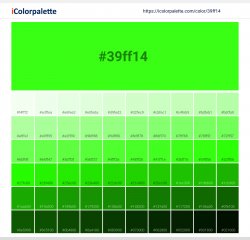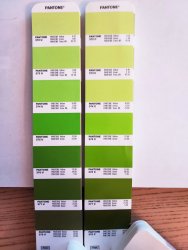What the Heck
Well-Known Member
- Messages
- 46
- Likes
- 3
Hello, Everyone. I am beyond frustrated.
I'll just say it. Whoever designed and standardized the CMYK color system should be hunted down, shot, and drawn and quartered. It is just horrific.
I have a logo that is a bright neon/fluorescent green. It is Pantone color 39ff14. (Please see the color swatches below.)
I've been talking to printers for years. Not only does CMYK not have an equivalent;. they can't even come close. I mean, it's laughable.
Which leads to my question. I am attempting to print something close to what I need from a standard HP inkjet, and of course the results are dismal and abject. Short of hiring an expensive Pantone printing house, is there any conversion software or adjustments to trick my CMYK printer into printing a color that gets close to what I need?
It's just absurd how bad CMYK is. How in God's green early did this become an industry standard?
Thank You,
WTH

I'll just say it. Whoever designed and standardized the CMYK color system should be hunted down, shot, and drawn and quartered. It is just horrific.
I have a logo that is a bright neon/fluorescent green. It is Pantone color 39ff14. (Please see the color swatches below.)
I've been talking to printers for years. Not only does CMYK not have an equivalent;. they can't even come close. I mean, it's laughable.
Which leads to my question. I am attempting to print something close to what I need from a standard HP inkjet, and of course the results are dismal and abject. Short of hiring an expensive Pantone printing house, is there any conversion software or adjustments to trick my CMYK printer into printing a color that gets close to what I need?
It's just absurd how bad CMYK is. How in God's green early did this become an industry standard?
Thank You,
WTH

Last edited:



